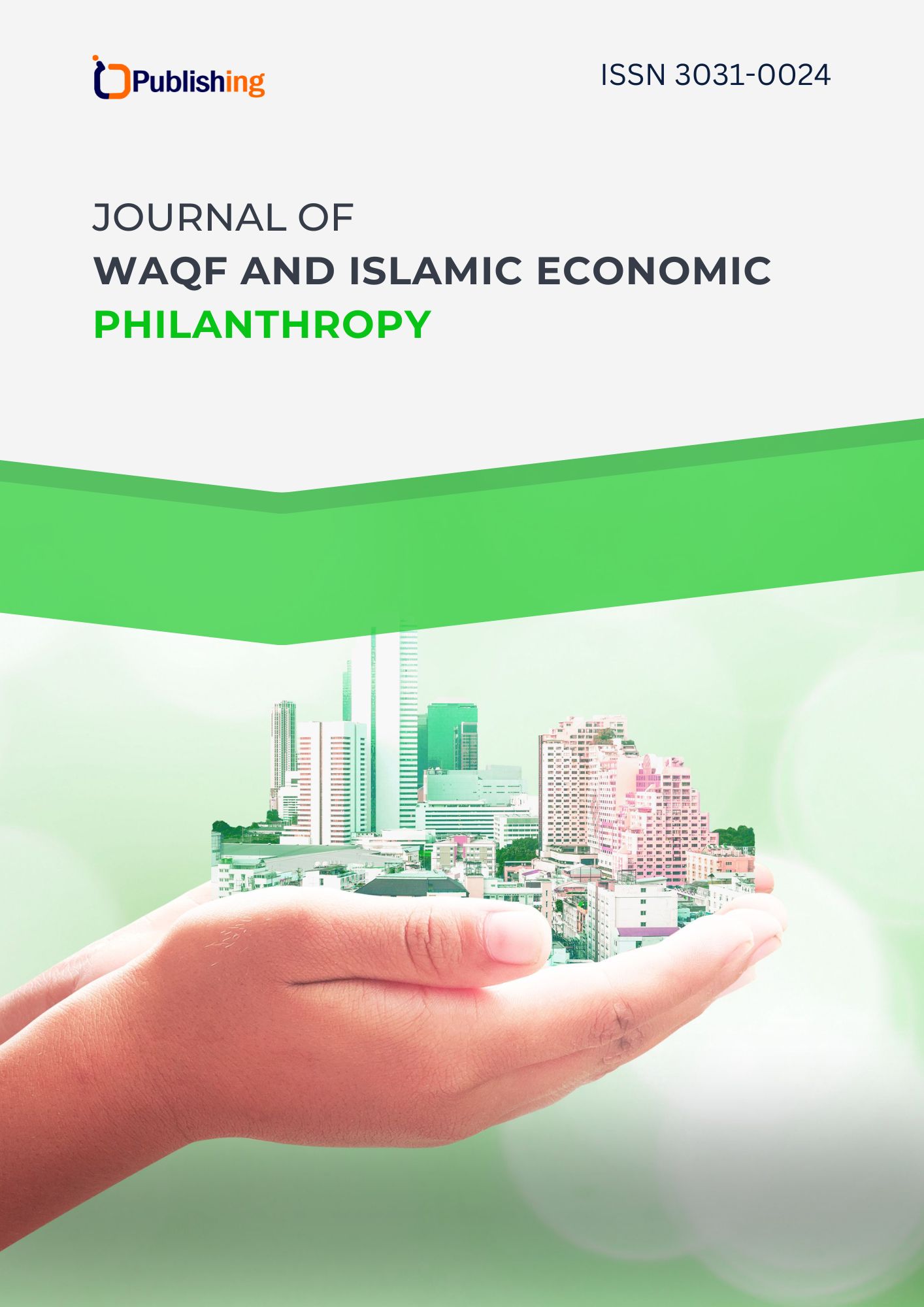Impact of the Capital Adequacy Ratio (CAR) and Mudharabah on the Return on Asset (ROA) on Sharia General Banks Registered in the Financial Services Authority (OJK)
DOI:
https://doi.org/10.47134/wiep.v1i1.48Keywords:
CAR, Mudharabah, ROAAbstract
The objective of this study was threefold: (1) to assess the impact of the capital adequacy ratio on the return on assets of Islamic Commercial Banks that are registered with the Financial Services Authority (OJK), (2) to examine the influence of mudharabah return on assets at Islamic Commercial Banks registered with OJK, and (3) to ascertain the combined effect of the capital adequacy ratio and mudharabah return on assets at Islamic Commercial Banks registered with OJK. The investigation was carried out throughout the period spanning from July to August of 2021. The research undertaken employed a quantitative-descriptive methodology, utilizing an associative approach. The utilized data source consisted of secondary data. The population under consideration encompasses the complete set of financial statements belonging to Islamic Commercial Banks (ICB) in Indonesia that were registered with the Otoritas Jasa Keuangan (OJK) throughout the period spanning from 2016 to 2020. The employed sample approach was the saturation sampling technique. The data was acquired from a collection of financial records comprising a total of 60 samples. The approaches employed for data collection involved the utilization of observation and documentation methods. The employed methodology for data analysis was multiple linear regression. The findings of this study suggest that there is a positive and statistically significant relationship between the capital adequacy ratio and return on assets at Islamic Commercial Banks, albeit to a partial extent. (2) The impact of mudharabah on the return on assets of Islamic Commercial Banks was found to be insignificant. (3) However, when considering the capital adequacy ratio and mudharabah together, a positive and substantial relationship was observed with the return on assets of Islamic Commercial Banks. The findings of the aforementioned study indicate that the capital adequacy ratio and mudharabah significantly impact the return on assets of Islamic Commercial Banks that are registered with the Otoritas Jasa Keuangan (OJK). Hence, the bank possesses the ability to oversee and uphold the standard of the capital adequacy ratio and mudharabah on return on assets (ROA) in order to enhance the bank's profitability. The findings suggest that both the capital adequacy ratio and mudharabah exhibit a favorable influence on the return on assets, as they demonstrate a positive impact and the ability to enhance bank profitability.
References
Audia, G. (2017). Stewardship theory and its implications for the banking industry in the context of Islamic banking. Journal of Islamic Accounting and Business Research, 8(2), 207-226.
Faruq, A., & Mulyanto, T. H. (2017). The impact of capital adequacy ratio (CAR) on profitability (ROA) in sharia commercial banks in Indonesia. Journal of Applied Management, 17(3), 927-942.
Fishbein, M., & Ajzen, I. (1988). Theory of Reasoned Action: Some Applications and Implications. Nebraska Symposium on Motivation, 27, 65-116.
Irma, R. (2019). The influence of financial reporting information quality on financial performance: An empirical study on sharia commercial banks in Indonesia. Journal of Applied Management and Business Research, 19(6), 73-89.
Kadmasasmita, D. (2016). The impact of profitability, market risk, and liquidity risk on bank value: An empirical study on sharia banks in Indonesia. Journal of Economics, Finance, and Accounting, 4(1), 1-10.
Kementerian Agama. (2017). Surah al-Baqarah, verse 168 of the Qur'an.
Littlejohn, S. W., & Foss, K. A. (2012). Theories of Human Communication (10th ed.). Waveland Press.
Okta, A. A., & Hafifah, R. (2020). Understanding Consumer Behavior in Online Shopping: A Literature Review. Journal of Business and Retail Management Research, 14(1), 186-197.
Raharjo, M., & Wahyuni, T. (2019). Islamic Finance and Its Role in Economic Development: A Case Study of Sharia General Banks in Indonesia. International Journal of Islamic Economics and Finance, 3(2), 189-204.
Raharjo, R. P., & Wahyuni, S. D. (2019). The impact of mutharabah financing on sharia commercial bank profitability in Indonesia. Islamic Economic Review, 28(2), 213-230.
Raturrahmi, R. (2018). The role of capital adequacy ratio (CAR) and liquidity risk in determining the capital management strategy of sharia banks in Indonesia. International Journal of Economics and Management, 8(1), 21-34.
Rivai, V. (2017). Islamic Banking: A Comparative Analysis of Financial Performance in Indonesia. Journal of Islamic Economics, Banking and Finance, 13(3), 81-94.
Santoso, I. (2021). Sharia Banking Development Roadmap 2020-2025: Challenges and Opportunities. International Journal of Islamic Economics and Finance, 5(1), 45-56.
Schumpeter, J. A. (1934). The Theory of Economic Development: An Inquiry into Profits, Capital, Credit, Interest, and the Business Cycle. Harvard University Press.
Sintiya, A. (2018). The role of capital adequacy ratio (CAR), return on assets (ROA), and risk management in determining the sustainability of sharia commercial banks in Indonesia. Journal of Sustainable Finance, 7(2), 11-25.
Spence, M. (1972). Market Signaling: Informational Transfer in Hiring and Related Screening Processes. Harvard University Press.
Surachmanto, S. T., et al. (2019). Elaboration Likelihood Model (ELM) in Understanding Islamic Marketing: A Conceptual Analysis. Journal of Islamic Marketing, 10(3), 753-767.
Downloads
Published
How to Cite
Issue
Section
License

This work is licensed under a Creative Commons Attribution-ShareAlike 4.0 International License.








